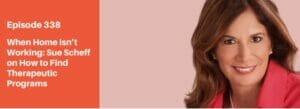ADHD: It is a common diagnosis and I am very familiar with it since my son was ADHD. Today however, I think many are quick to DX and even quicker to prescribe medications.
Stimulants prescribed to treat conditions like narcolepsy and attention deficit hyperactivity disorder (ADHD) are often abused by high school and college students looking to keep themselves awake for long hours of studying and remain alert and focused during testing. With the high rates of non-medical study drug use among these demographics, it is important to understand just what the drug does, how it affects students and what is being done to lower the rates of abuse.
As Prescribed
Let’s first take a look at what Adderall is and, when used properly, what it treats.
Adderall is a combination stimulant that works in the central nervous system. It was created to increase focus and decrease impulsiveness in people with ADHD. It has also been found to help sufferers of narcolepsy from bouts of unconsciousness and sleepiness.
Treating ADHD/ADD
Stimulants have been shown to boost and balance neurotransmitters in the brain, thus correcting the hyperactivity and lack of focus in patients with ADHD or ADD.
Estimated percentage of school-age children with a diagnosis of ADHD or ADD: 7%
Treating narcolepsy
Stimulants have been shown to counteract narcoleptic attacks and prevent patients from becoming unconscious.
Americans who suffer from narcolepsy: 1 in 3,000
Even using the drug as prescribed can come with serious complications.
Possible side effects
- Seizures
- Blurred vision
- Decreased appetite
- Trouble sleeping
- Uneven heartbeat
- Depression
- Tremors
- Muscle tics or twitches
- Hallucinations
Abuse in Academia: The Numbers
U.S. university students who report having taken stimulants non-medically at least once: 7%
Students at University of Kentucky who admit to illegally taking a stimulant: 3 in 10
Average street cost per pill: $2 to $5
College students who say they’ve been asked for stimulants to use as study drugs: 1 in 4
College students who admit selling such stimulants to other students: 30%
A Short History of Adderall
- 1996: Shire Pharmaceuticals introduces and patents the drug to treat ADD/ADHD.
- 2001: Shire introduces Adderall XR time release capsule so that ADD, ADHD and narcolepsy sufferers can receive a steady dose all day long.
- 2005: Many active-duty military personnel are prescribed stimulants to aid them during times of war.
- 2010: The number of prescriptions for active-duty soldiers increases ten-fold. The Department of Defense spends $39 million on 32,000 prescriptions.
- 2010: 18 million prescriptions for the drug are written nationwide, suggesting it is being used recreationally. Only certain doctors and nurse practitioners are licensed to prescribe the drug, making it a bit more difficult to get.
- 2012: Because of so many prescriptions, there is a shortage of the drug. Congress creates a ceiling for the production of the drug’s main ingredient, amphetamine.
- Summer 2013: Democratic Sen. Chuck Schumer urges administrators at universities in New York to limit how many pills students can be prescribed at once, require medical history of ADD or ADHD to obtain the drug and educate students about the risks posed by study drugs.
- Today: Many pharmaceutical companies making the drug and generic forms of it are waiting for the ceiling to be risen on amphetamine production. If the DEA does raise the allotted amount, the drug will become cheaper, especially when sold in the generic form.
A Gateway Drug?
A great deal of research has linked stimulant abuse to progressively more dangerous substance abuse among college students.
Full-time college students who have abused study drugs in the past year who also abuse alcohol: 90%
It has been shown that students who take study drugs illegally are more likely to use other illicit drugs.
SOURCES
- http://www.mayoclinic.com
- http://www.cdc.gov
- http://www.ninds.nih.gov
- http://www.drugs.com
- http://www.time.com
- http://www.cnn.com
- http://www.samhsa.gov
- http://www.nytimes.com
- http://minnesota.cbslocal.com
- http://www.huffingtonpost.com
- http://www.hightimes.com
- http://www.oas.samhsa.gov
